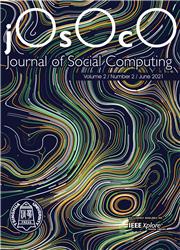Counterfactual Reasoning Over Community Detection: A Case Study of the Public Science Day Community
引用次数: 0
Abstract
With the rapid rise of new media platforms such as Weibo and Tiktok, communities with science communication characteristics have progressively grown on social networks. These communities pursue essential objectives such as increased visibility and influence. For the success of the public understanding of science in China, case studies of science communication communities on social media are becoming increasingly valuable as a point of reference. The authenticity of user influence plays an important role in the analysis of the final outcome during the process of community detection. By integrating counterfactual reasoning theory into a community detection algorithm, we present a novel paradigm for eliminating influence bias in online communities. We consider the community of Public Science Day of the Chinese Academy of Sciences as a case study to demonstrate the validity of the proposed paradigm. In addition, we examine data on science communication activities, analyze the key elements of activity communication, and provide references for not only augmenting the communication impact of similar types of popular science activities but also advancing science communication in China. Our main finding is that the propagation channel for the science communication experiment exhibits multi-point scattered propagation and lacks a continuous chain in the process of propagation.社区检测中的反事实推理——以科普日社区为例
随着微博、抖音等新媒体平台的迅速崛起,具有科学传播特色的社区在社交网络上逐渐壮大。这些社区追求提高知名度和影响力等基本目标。为了使公众对科学的理解在中国取得成功,社交媒体上科学传播社区的案例研究作为一个参考点变得越来越有价值。在社区检测过程中,用户影响的真实性对最终结果的分析起着重要作用。通过将反事实推理理论集成到社区检测算法中,我们提出了一种消除网络社区中影响偏见的新范式。我们将中国科学院公共科学日社区作为一个案例研究,以证明所提出的范式的有效性。此外,我们还对科学传播活动的数据进行了检验,分析了活动传播的关键要素,为增强类似类型科普活动的传播影响以及推进中国的科学传播提供了参考。我们的主要发现是,科学传播实验的传播通道表现出多点散射传播,在传播过程中缺乏连续链。
本文章由计算机程序翻译,如有差异,请以英文原文为准。
求助全文
约1分钟内获得全文
求助全文

 求助内容:
求助内容: 应助结果提醒方式:
应助结果提醒方式:


